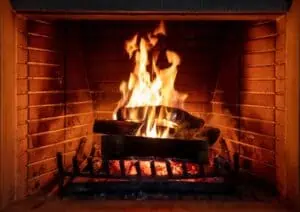How to Use a Wood-Burning Fireplace?
A wood-burning fireplace is an efficient way to heat your home, but it’s important to know how to use one correctly. Using the wrong technique can cause your fire to go out, smoke, or not put out as much heat as you’d like. Luckily, there are a few simple tips to help you get started.
(Looking for a “fireplace damper contractor“? Contact us Today!)

First, check the function of your chimney and damper. If the damper isn’t opening properly, you can have a lot of smoke and toxic fumes come up into your home. This can be dangerous and you may need to call in a professional chimney sweep to inspect and repair your fireplace.
Next, make sure your stove is insulated. This will prevent moisture buildup in the firebox that can damage it and reduce its efficiency. Also, keep an operational fire extinguisher near where you use the fireplace.
Ensure your wood is well seasoned and split at least six months ago. This will help it burn more efficiently and emit less smoke and soot.
Place the ash out of the firebox and onto a metal container with a cover to remove it from the fireplace when not in use. This will allow you to clean the fireplace without causing the ashes to spill into the air and create a mess.
Once your ashes are out of the fireplace, use a broom to remove the coals and any ash that accumulates in the firebox. Then, rake these coals toward the air inlets (and your wood stove door).
For most models of a wood-burning fireplace, the live coals are found at the back of the firebox furthest from the air supply. This makes it easier to rake the coals forward and add logs on top of them.
The easiest and most efficient way to build a fire is with a stacked fire method. A stacked fire is a kind of “top-down” fire that uses the top of the logs to build the base of the fire. This is a good fire-building strategy if you have limited space or don’t want to carry heavy pieces of wood.
You can start a stacked fire by placing some paper or firelighters in the bottom of the firebox and stacking about four to six logs on top of them. This helps the logs ignite and burn more quickly, reducing the amount of time it takes for the logs to reach a glowing red color.
If the fire isn’t going well, it can be helpful to preheat the flue by lighting some gas before you begin adding wood. This will make it easier to get a clean burn by removing creosote buildup in the chimney.
Depending on the model of your stove, you can use the air control to adjust the temperature and length of the burn by adjusting the amount of air being delivered to the wood. This can be done in stages, beginning with a full-air setting and reducing it slowly to produce the desired amount of heat and length of time the fire is burning.

